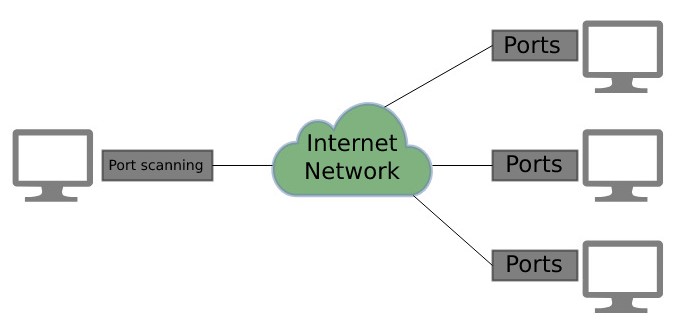Ethical hacking, also known as penetration testing or white-hat hacking, involves legally breaking into computers and devices to test an organization’s defenses. Ethical hackers follow a systematic approach to identify and address vulnerabilities.
The five stages of ethical hacking are –
- Reconnaissance
- Scanning and Enumeration
- Gaining Access
- Maintaining Access
- Covering Tracks
Let’s understand each stage –
1. Reconnaissance:-

Also known as information gathering or footprinting, this initial stage involves collecting as much information as possible about the target system to prepare for an attack. Ethical hackers use various tools and techniques to gather data, including:
- Passive Reconnaissance: Observing the target without direct interaction, using publicly available information such as WHOIS databases, DNS records, social media, and websites.
- Active Reconnaissance: Interacting with the target system to gather information, often using tools like Nmap to scan for open ports and services.
Activities:
- Identifying domain names, IP addresses, and network ranges.
- Gathering details about the target organization’s structure, employees, and technologies in use.
2. Scanning:-

Building on the information gathered during reconnaissance, the scanning phase involves probing the target system for specific vulnerabilities. also Identify live hosts, open ports, and services running on the target systems. This can include –
- Network Scanning: Using tools like Nmap to identify active devices and their IP addresses.
- Port Scanning: Detecting open ports on the target systems to determine which services are running.
- Vulnerability Scanning: Using automated tools like Nessus or OpenVAS to identify known vulnerabilities.
Activities:
- Mapping the network to understand the layout and the devices present.
- Identifying weak points in the target systems, such as open ports and outdated software versions.
3. Gaining Access:-

In this phase, ethical hackers exploit identified vulnerabilities and exploit identified vulnerabilities to gain unauthorized access to the target systems. Techniques used may include:
Techniques:
- Exploiting Software Vulnerabilities: Using known exploits to take advantage of weaknesses in the software.
- Social Engineering: Manipulating individuals into divulging confidential information.
- Brute Force Attacks: Attempting many passwords or encryption keys in a systematic manner.
Activities:
- Deploying payloads and malware to establish initial access.
- Using tools like Metasploit to automate the exploitation process.
4. Maintaining Access:-

Ensure continued control over the compromised system without detection. Once access is gained, ethical hackers attempt to maintain their presence within the target system to simulate prolonged unauthorized access. This involves –
- Backdoors: Installing software that allows re-entry into the system.
- Rootkits: Creating hidden processes or files to maintain access and camouflage the hacker’s presence.
- Trojan Horses: Embedding malicious code within legitimate software or files.
Activities:
- Setting up persistent connections to the compromised system.
- Ensuring remote access for future exploitation.
5. Covering Tracks:-

The final phase involves ensuring that any changes made during testing are removed or reported. Remove any evidence of the hacking activities to avoid detection.
Techniques:
- Log File Tampering: Deleting or altering log files that record the hacker’s activities.
- Clearing Bash History: Removing command history on Unix/Linux systems.
- Using Anti-Forensic Tools: Employing tools designed to securely delete traces of activities and data.
Activities:
- Deleting or modifying logs to cover their tracks.
- Ensuring any malware or tools used during the attack are removed or disguised.
Ethical hacking is a structured process aimed at identifying and mitigating security weaknesses within an organization. By following these five stages, ethical hackers can provide valuable insights and help organizations strengthen their security posture.